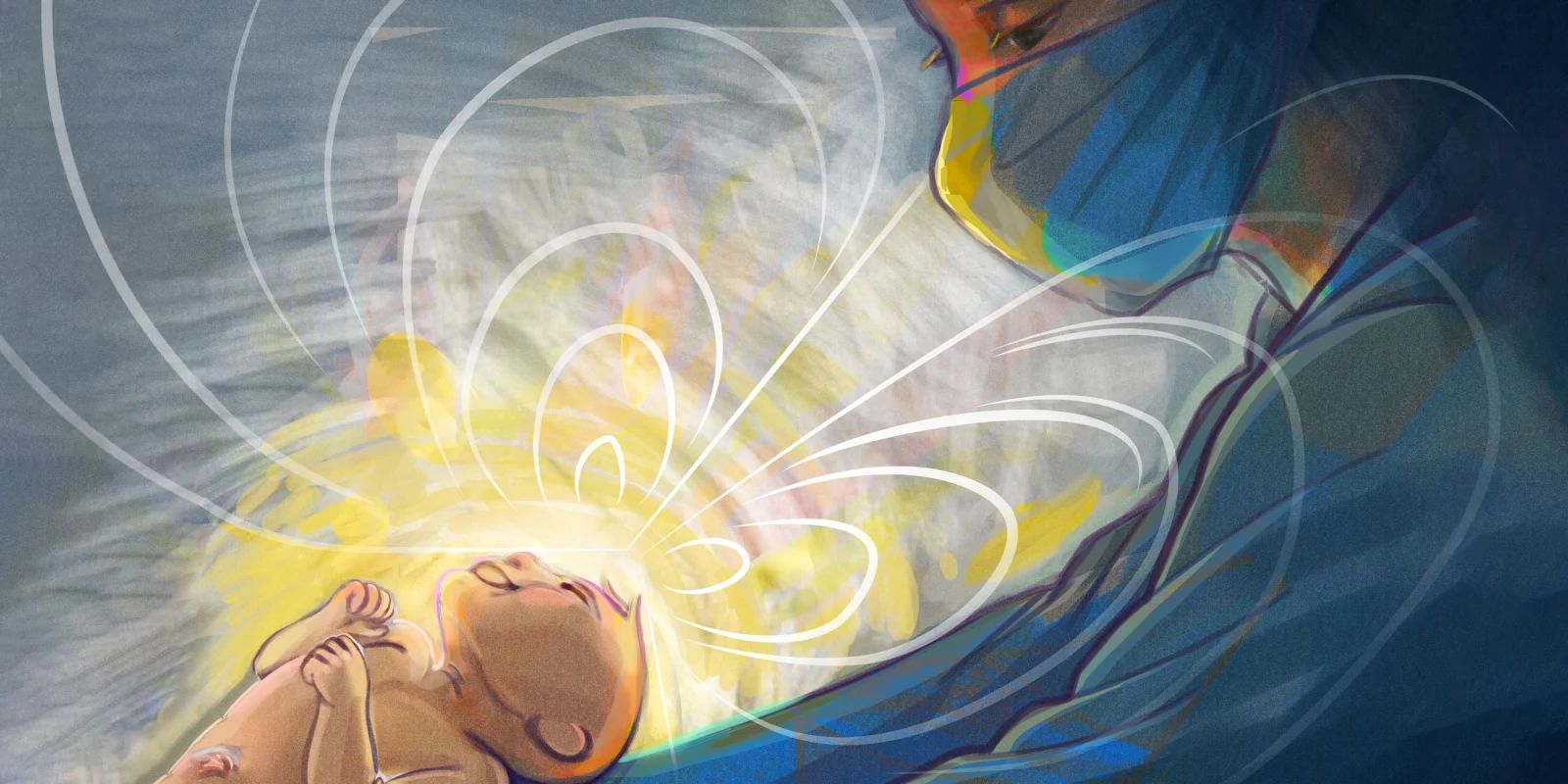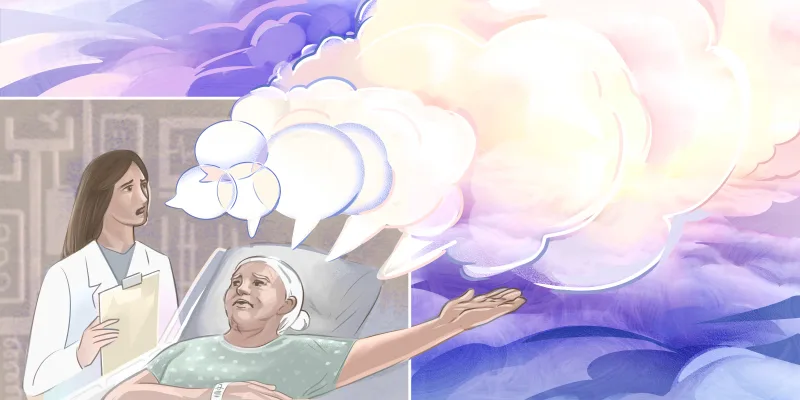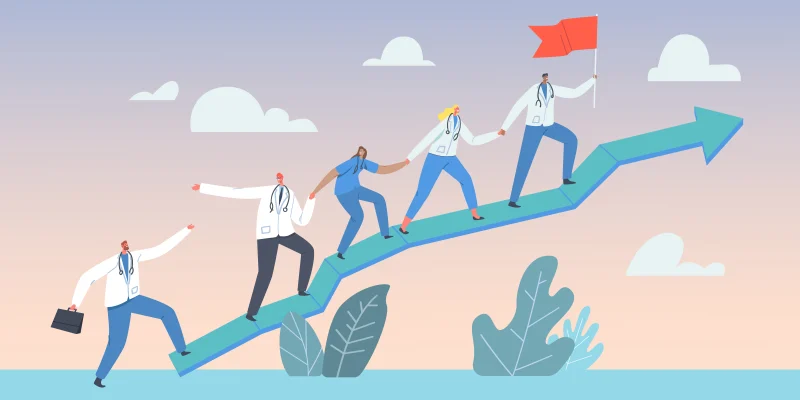5:30 am. The halls of the hospital are empty, the night shift ending, the sun peeking through the windows. I arrive at the residents’ workstation on the Labor & Delivery floor, tired, nervous, and excited.
I’m on my obstetrics/gynecology rotation, my first month on the wards during my third year of medical school. A midwife, the workstation’s sole occupant, is drifting off, her hands folded, eyes closed, and face to the ceiling, as if in prayer. My eyes are groggy but bright.
I wander to the whiteboard, the central station of the L&D floor. This is where nurses, midwives, and secretaries sit, waiting for deliveries, exchanging stories, and preparing to pass the baton to the day teams. The whiteboard itself contains information about each patient we’re working with. As often as possible, it is updated with markers of labor’s progress, such as estimates of how dilated and effaced patients’ cervices are. Dilation and effacement are no crystal ball, but they help give us an idea of whether a delivery will occur in the next few or several hours.
I look down the whiteboard’s list for a patient who, hopefully, may deliver today before I leave for lecture. There’s one: 6 cm dilated with two prior deliveries. I write my name in the same row as the patient’s to let the medical team I’ll be following them for the day. I introduce myself to the patient and her partner. They seem nervous but know what to expect. When I ask if I can be a part of the delivery, they smile and agree.
I leave to find the nurse caring for her. I realize that I only know the patient’s cervix is 6 cm dilated, which means she’s moving between the latent and active phases of labor. As a newly minted clinical student, I think that the baby will be delivered any minute now. Nervously, I don my PPE: first the N95, then blue mask, then face shield. As I sit near the patient’s room and wait for her medical team to visit, the nurse watching over the patient finds me, bewildered. “You know it’ll be hours before the delivery, right?”
Sheepishly, I remove my PPE and wait.
Before my ob/gyn rotation, I had spent months at home, finishing a long period of studying for Step 1, protracted by the pandemic. During that time, I lived with my family and our stories. I learned about my mother’s parents’ survival of a train accident. One evening in 1963, my grandparents were visiting friends outside Manila, Philippines. On the trip home, they reached a crossroads, where the guard’s shift there had ended. The bar was raised, and the lights warning of approaching trains did not flash. That night, an unscheduled train did not blow its whistle. As my grandparents crossed those tracks, their car and the train collided.
My grandparents were thrown several yards away, and they were left unconscious with several fractured bones. At that time, my grandmother was 5 months pregnant. Both my grandparents, as well as the child my grandmother bore, survived that accident. When my grandmother delivered that child — my mother — she named her Victoria because of their victory at those crossroads – their miracle of survival.
My mother told me stories of her own pregnancies, too. Her first ended in miscarriage, a loss that occurred while she was a pathology resident in New York City. She vividly recalls when she lost that pregnancy, like a movie left on loop in a cinema buried within her. She felt a mixture of grief, confusion, and fear that only more miscarriages would come. She was not much older than I am now.
My mother’s second pregnancy, though, ended with the delivery of her firstborn, my older sister. She was a rainbow baby – the beauty after a storm. It happened on the Fourth of July, and fireworks punctuated the air outside the hospital when my parents finally saw her. I can only imagine the untold joy, relief, and gratitude they felt.
While I wait for my patient to progress through the stages of labor, I reflect on these stories, each reminding me to appreciate the miracle of life. Within hours, a nurse and midwife signal to me that delivery is imminent, and I help welcome a baby into the world for the first time, tears welling in my eyes.
When the baby and placenta are delivered, I tell the parents, “Thank you for letting me be part of the delivery.” They say I did great, although, to me, my role was just to learn. My hands were guided by the midwife’s as I helped catch the baby.
As I reflect on this delivery, I’m reminded of my family history: that my grandmother, pregnant with my mother, survived a train accident; that if my mother kept having miscarriages, she would not have had my siblings or myself; and that my ancestors, as well as their ancestors, must have faced untold challenges, carried on, carried to term, and lived, too. It seems so unlikely that I would be here, yet here I am.
There is a tenuousness between birth and loss that is difficult to explain until you’ve heard the stories about it, until you’ve witnessed it yourself, until you’ve lived through it. Loss forces gratitude for each moment of life we are given.
Childbirth – when the outcome is desired, and when complications are avoided – can be an amazing event to behold. I am thankful that medical school allowed me to bear witness to this miracle. My experience of delivery – a mixture of joy, awe, and relief – was my first, and I’ll hold onto it for as long as I can.
Amador (“Tino”) Delamerced is a medical student at the Warren Alpert Medical School of Brown University. He is the producer of Firsts, a podcast series about first-time experiences during medical training. Tino is a 2021–2022 Doximity Op-Med Fellow.
Illustration by April Brust






